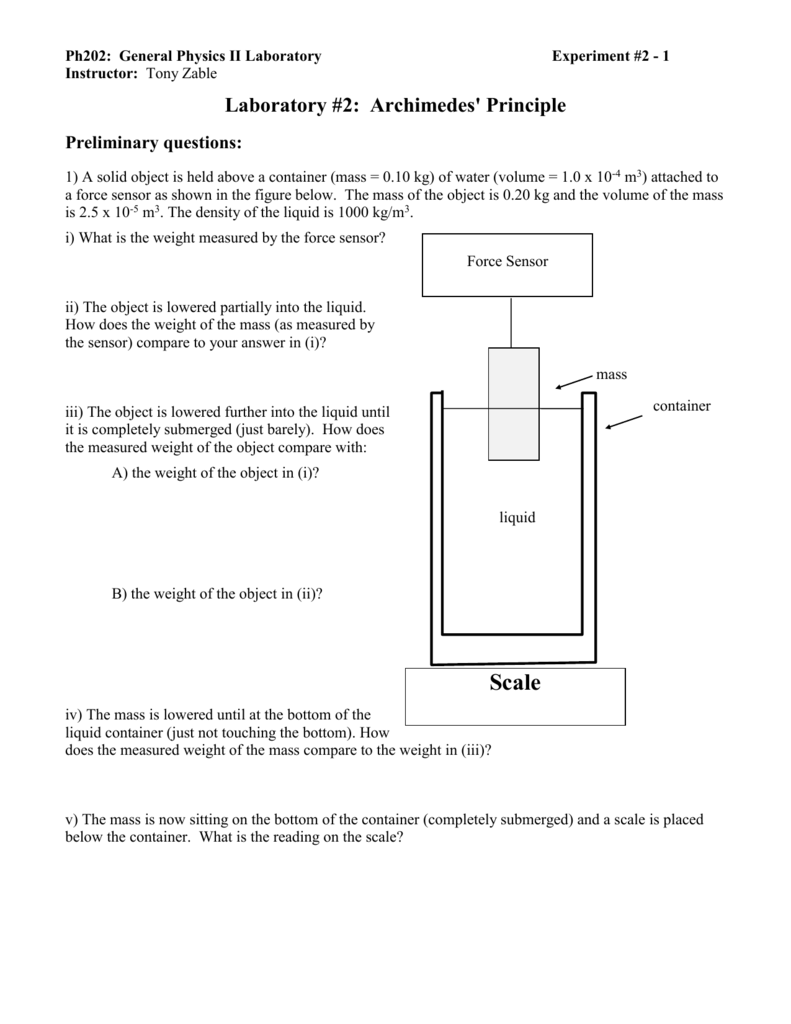

(specific gravity) (4)p fApparatus: Spring balance, Wood cylinder, sinkers, Standard masses, Glass bottle,denatured alcohol, Brass cylinder, Aluminum cylinder, Vernier caliper.Procedures and Questions:1. For a completely submerged object, the volume of the fluid displacedis necessarily equal to the volume of the body immersed (call them both V). Apparently (while in his bath) Archimedes realized that submerged objects. It can be shownfurther that the ratio W/B is equal to the specific gravity of the immersed substancerelative to the fluid. 212 B.C.), established the theory of floatation and defined the buoyancy principle. from the difference of the weight in air and the weight in fluid.


We can then compute the buoyant forcefrom the equationB = W - T (3)i.e. The tension T in the string.Since the body is in equilibrium, T+B-W = 0. The buoyant force B: which can be expressed B= V b r f p f (2)(the subscript f refers to fluid)3. The weight of the body W, which can be expressed as:W = m bg = V bp bg(1)where m b = mass of the body, V b = volume of the body, p b = density of the bodyand g = the acceleration due to gravity2. The lab allows students to check Archimedes Principle varying the mass of objects and the depth of immersion. Water, at room temperature, isgenerally chosen as this standard.If a solid body is submerged in a fluid, it will be acted upon by three forces:1. Specific gravity is the ratio of the density of a body to the density ofsome other substance which may be used as a standard. Since the displaced water was in equilibrium with thesurrounding water before being displaced, an equal buoyant force will be exerted on anycompletely submerged solid of a given volume.The density, usually abbreviated as r, is defined as the ratio of the mass of a body to thevolume of the body. LAB # 17 Archimedes PrincipleIntroduction: Whenever a solid body is immersed in a fluid, it displaces a volume of fluidequal to its own volume.


 0 kommentar(er)
0 kommentar(er)
